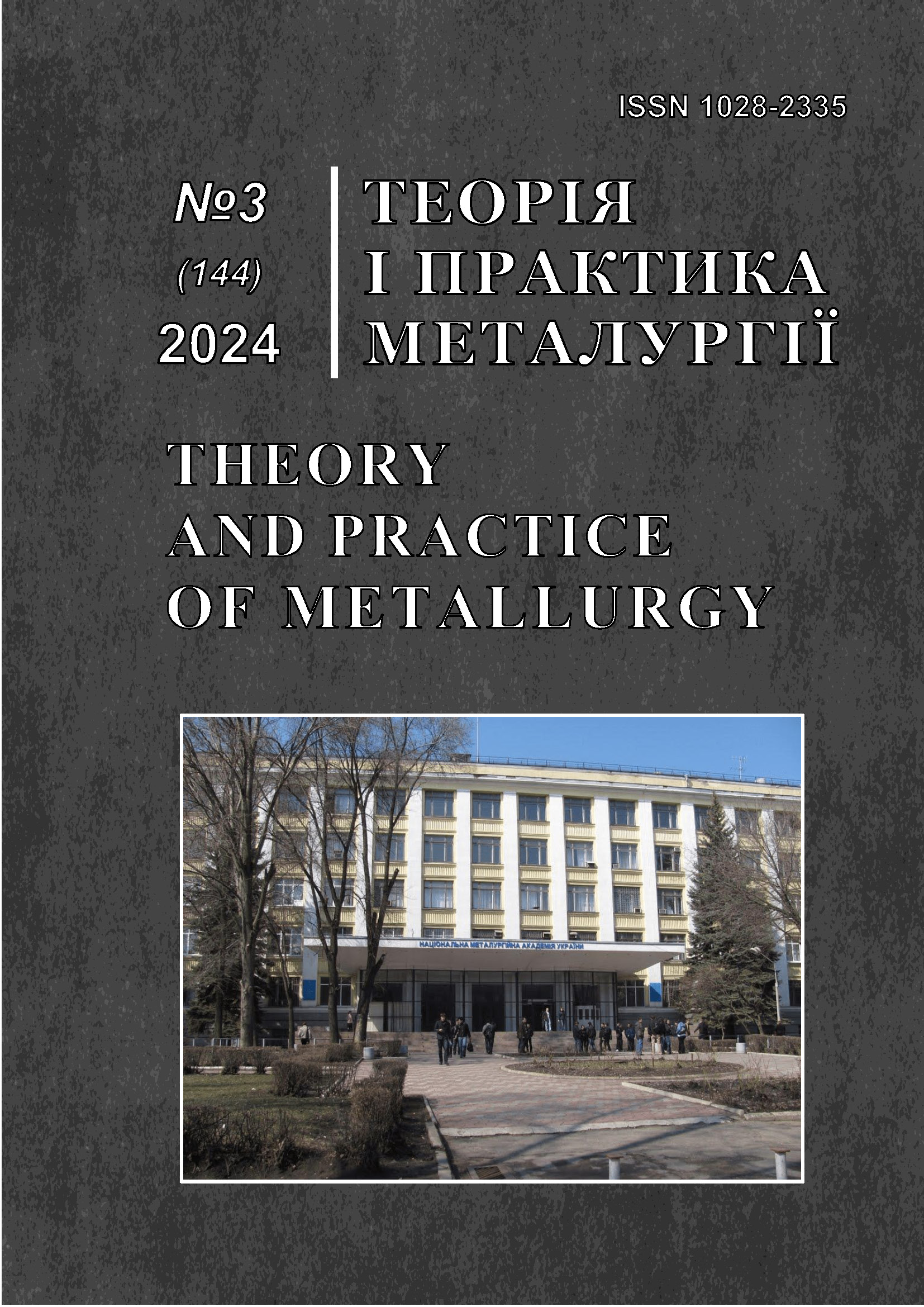Structure formation in multi-layer forgings from carbon and corrosion-resistant steel and copper alloys
DOI:
https://doi.org/10.15802/tpm.3.2024.04Keywords:
forging, multilaer blanks, modeling, carbon steel, chrome-nickel steel, copper alloys, weldingAbstract
The development of the technology for obtaining multi-layer forgings from various alloys contributes to the saving of scarce materials such as chrome-nickel corrosion-resistant steels. The properties of multilayer products combine the strength of the main layer of structural steel and the increased corrosion resistance of the highly alloyed layer, which is in direct contact with the working environment. Multi-layer materials are used in various industries. Laminated steel or laminate is used as a different tool. Laminate is a central sheet (plate), covered on both sides with sheets of steel of a different grade. The laminate tool has improved characteristics, it combines the properties of the central sheet and covers. One of the most common methods of manufacturing such materials is hot deformation. The most important problem in the production of multilayer steel composites is to ensure high-quality welding between layers of different steels. To develop the mode of forging multilayer blanks, computer modeling was carried out in the QForm program. After obtaining the simulation results, the heating modes were determined and the forging of composite packages from different steels was carried out. Deformation of the experimental samples was carried out by forging broach. After calculating the forging parameters, two passes were taken to deform the workpiece with a total degree of forging of 2.56. The following alloys were used for multilayer packages to be forged: for the central layer of ShH15, St 3 steel, for the covers AISI321 steel, which is an analogue of 08X18H10T steel, for intermediate layers - M1 copper and L63 brass. The peculiarities of the microstructure in the zones of contact welding of layers of brass - carbon steel and brass steel AISI321, copper - carbon steel, copper - steel AISI321, copper steel ShH15 were studied. As an intermediate layer for better welding of steel layers to each other in the forging process, as well as to prevent the diffusion of carbon and alloying elements, it is appropriate to recommend the use of M1 copper plate.
References
Lykhoshva, V. P., Shatrava, A. P., & Pelikan, O. A. (2018). Suchasni sposoby vyrobnytstva bimetalevykh vyrobiv. Metal i lytvo Ukrainy, ((9-10)(304-305)), 46-52
Bykov, A. A. (2011). Bimetal production and applications. Steel Transl. 41, 778–786. https://doi.org/10.3103/S096709121109004X
Wrobel, T., & Szajnar, J. (2015). Bimetallic casting: ferritic stainless steel – grey cast iron. Archives of metallurgy and materials, 60(3), 2361–2365. https://doi.org/10.1515/amm-2015-0385
Krakhmalov, O. V., & Sytnykov, P. A. (2017). Tekhnolohichni osoblyvosti zvariuvannia dvosharovykh stalei v enerhetychnomu kompleksi. Informatsiini tekhnolohii: nauka, tekhnika, tekhnolohiia, osvita, zdorovia. Part 2. pp. 38
Bimetaly. (1974-1985). In Bazhan, M. P. (Ed.) Ukrainska radianska entsyklopediia. 2-nd edition. Holovna redaktsiia URE
Bykov, A. A. (2009). Development of bimetal production. Part 1. Metallurg, 8, 70–75
URL: https://rezat.ru/articles/dostupno_o_laminatnoj_stali/
URL: http://www.qform3d.ru/products/qform
Krupin, A. V., Solov'ev, V. Ya., Popov, G. S., & Kr'stev, M. R. (1991). Obrabotka metallov vzryvom [Explosion treatment of metalls]. Metallurgiya
Shaparev, A. V., & Savin, I. A. (2015). Perfection of the technology of production of bimetalic tapes. The University Book
Boldyrew, W. W. (1975). Der mechanismus der tribochemischen zerlegung anor- ganischer salze. Z. Phys. Chem., 256(2), 342–348
Glagolev, V. V., Markin, A. A., & Pashinov, S. V. (2017). Bimetallicheskaya plastina v odnorodnom temperaturnom pole (A bimetallic plate in a uniform temperature field). Mechanics of composite materials and structures, 23(3), 331-343
Downloads
Published
How to Cite
Issue
Section
License
Copyright (c) 2024 Myronova T.М., Ashkelianets A.V., Bondarev S.V., Guba R.M.

This work is licensed under a Creative Commons Attribution 4.0 International License.
Authors retain copyright of the published papers and grant to the publisher the non-exclusive right to publish the article, to be cited as its original publisher in case of reuse, and to distribute it in all forms and media. Articles will be distributed under the Creative Commons Attribution 4.0 International (CC BY 4.0) licence.
Authors can enter the separate, additional contractual arrangements for non-exclusive distribution of the published paper (e.g., post it to an institutional repository or publish it in a book), with an acknowledgement of its initial publication in this journal.




